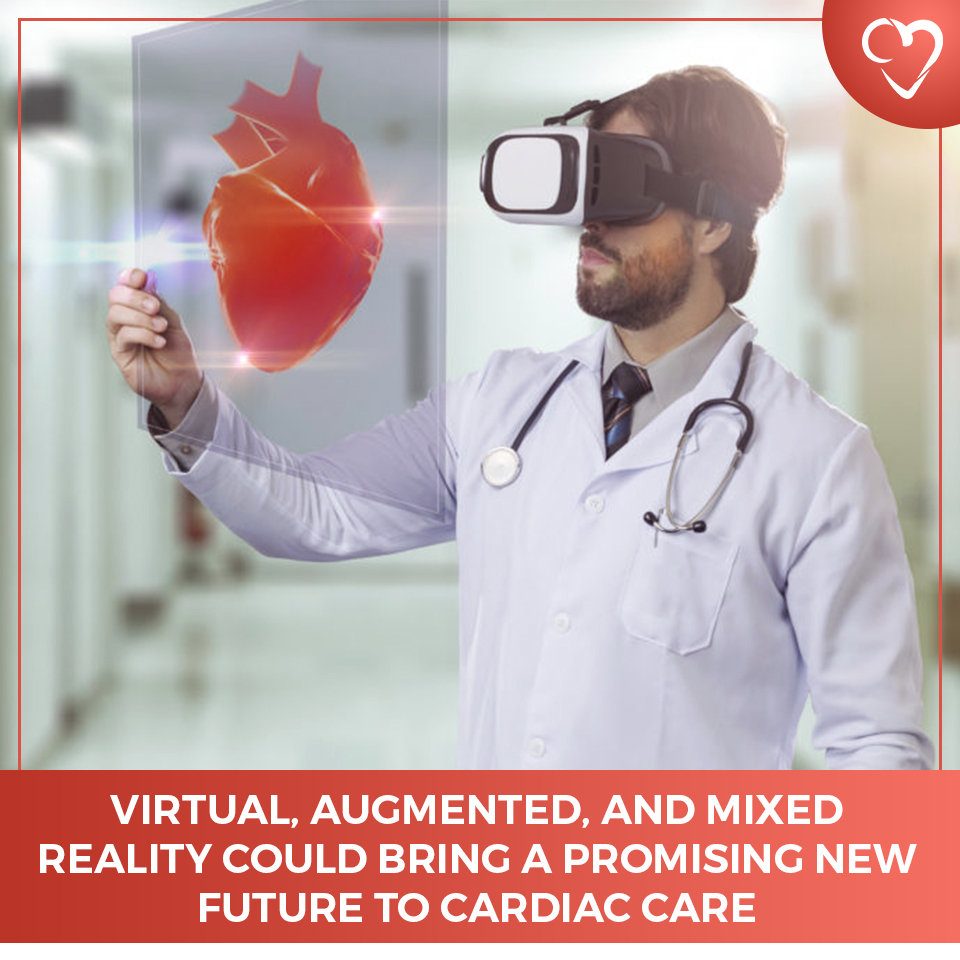
Virtual and augmented reality technology has long been promising to the medical field, but the equipment’s often unwieldy, expensive, and low resolution displays often thwarted its potential. Now, however, there are a number of technologies using VR and AR to assist in healthcare applications, and these offer particular promise to the cardiac field. A new review in Journal of the American College of Cardiology details several of these new devices alongside their benefits and drawbacks.
Among those new ‘virtual’ modes discussed is augmented reality (AR). Unlike VR which replaces the wearer’s entire field of vision and immerses them within the digital space, AR allows the user to stay in their “native” environment while providing additional information. AR places 2D or 3D images as an overlay over reality. There are also now two new types of VR experience, known as merged reality (MeR) and mixed reality (MxR). Both allow the user to interact with digital images and information without removing them from their real life context. MeR has the ability to digitally transport users to a different room and back, akin to a hologram. In the case of MxR, digital objects are projected onto a semi-transparent display.
Some of the additional advances that have pushed VR’s potential forward include smaller technologies (thanks in part to mobile device makers), high-resolution display technology, and increased computational power that aids with depth of field visualization, not to mention helps prevent motion sickness for the wearer. An additional benefit of these newer virtual or augmented reality media is that they offer better eye and hand tracking which helps make the devices more intuitive for clinicianswhile also being less burdensome to learn. These new devices can allow physicians to control 3D images using a sterile interface, giving them the opportunity to interpret them with greater accuracy and intervene more quickly, and could eventually lead to lower-cost procedures and higher success rates.